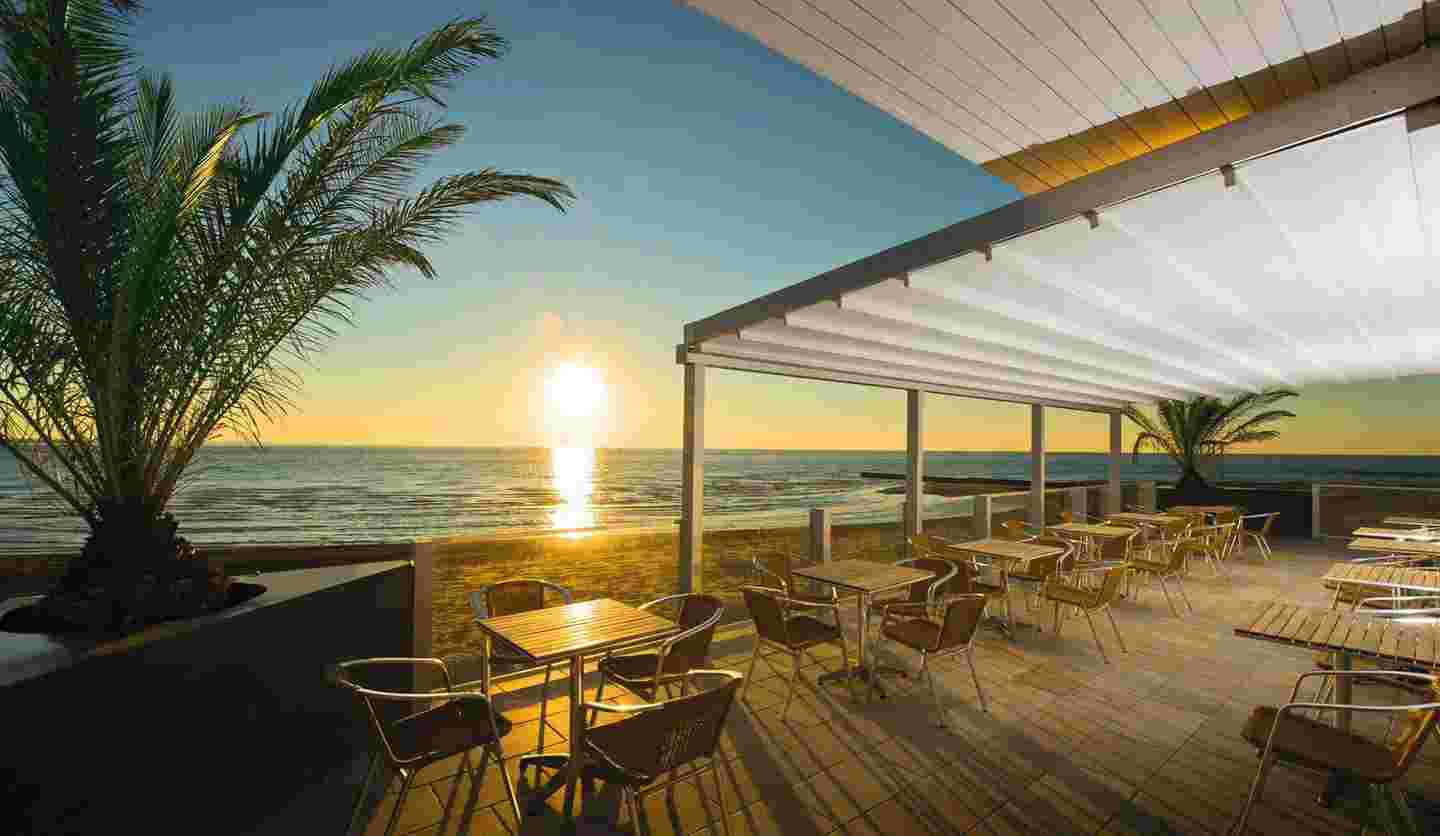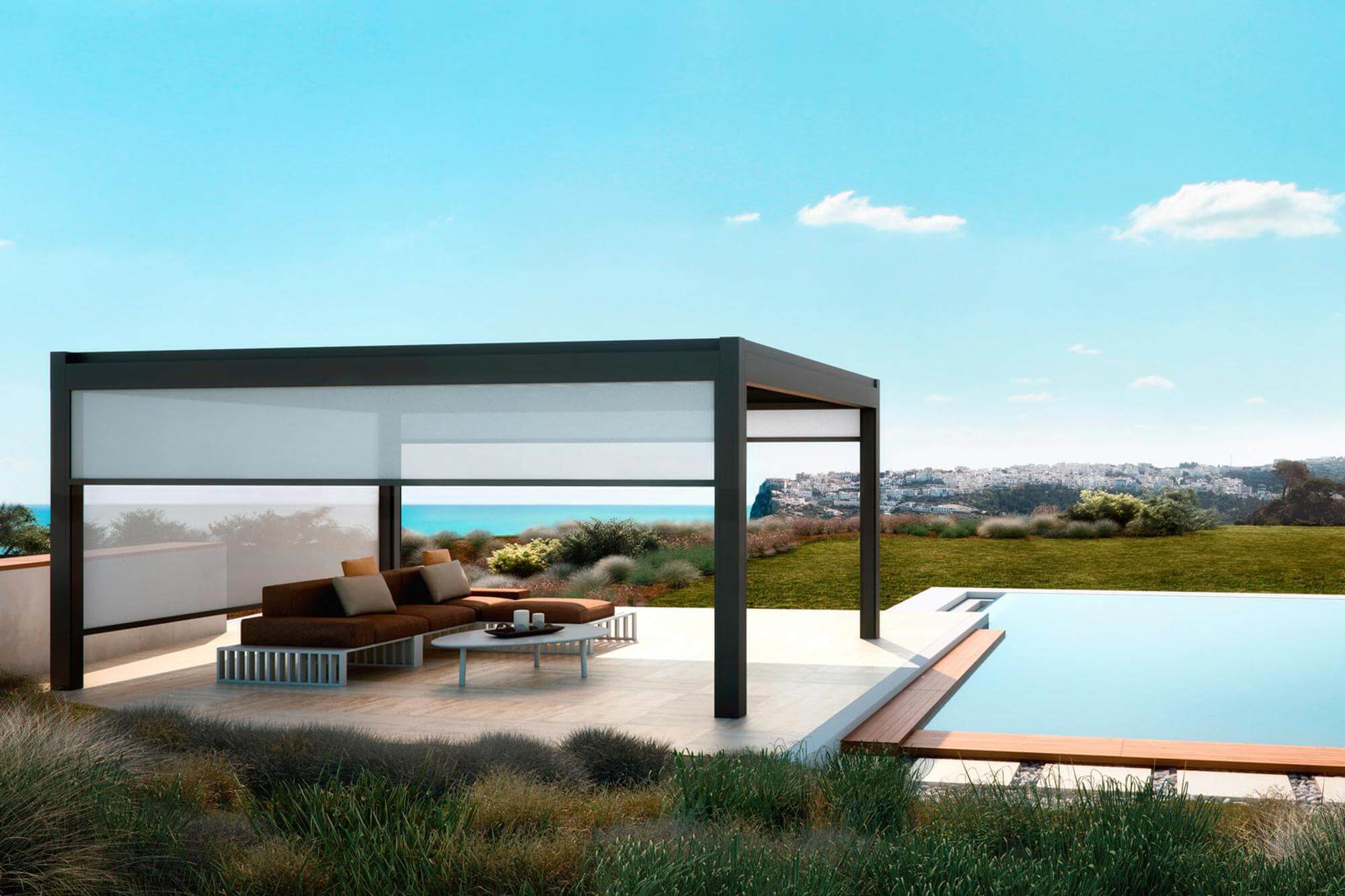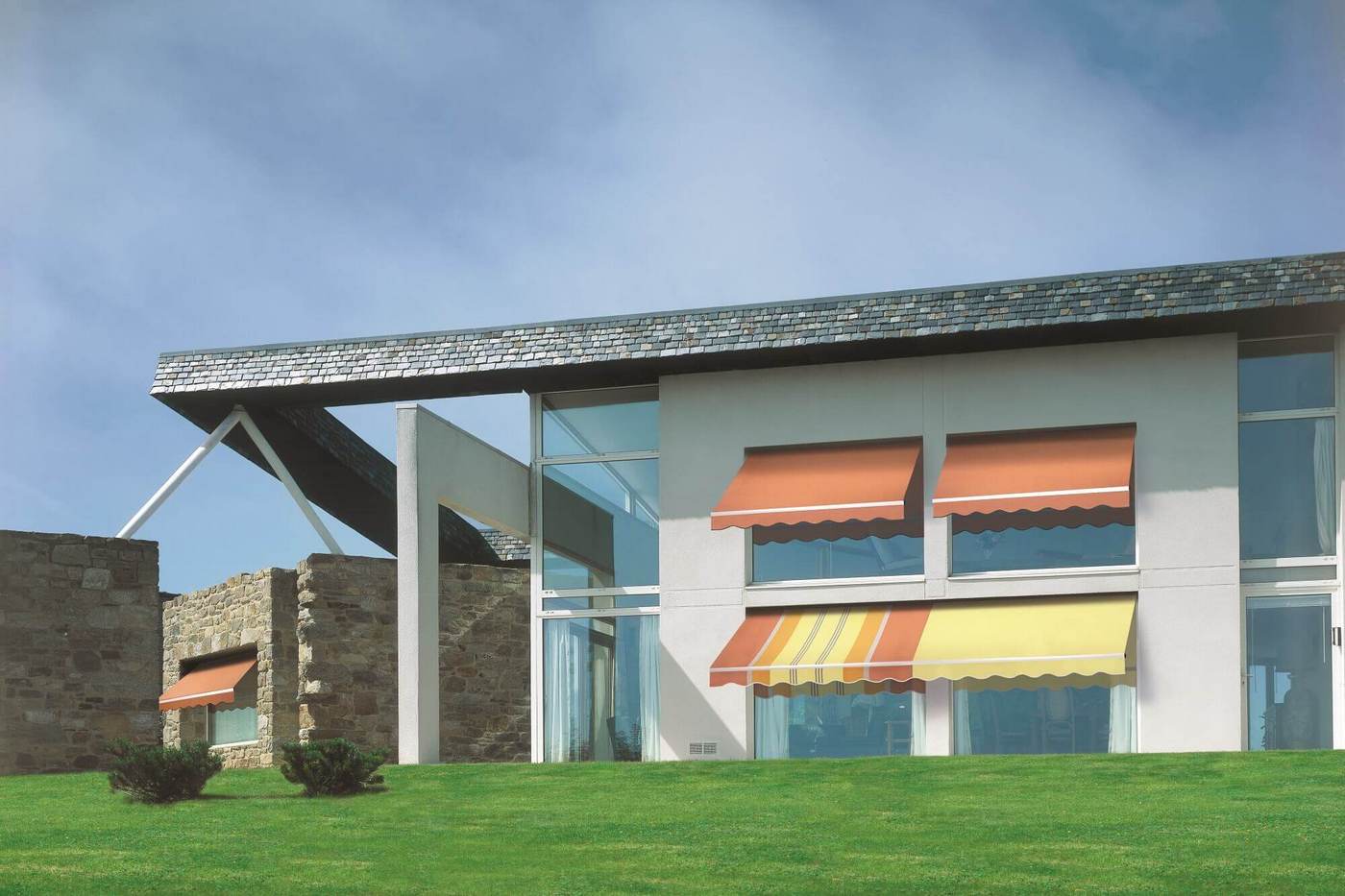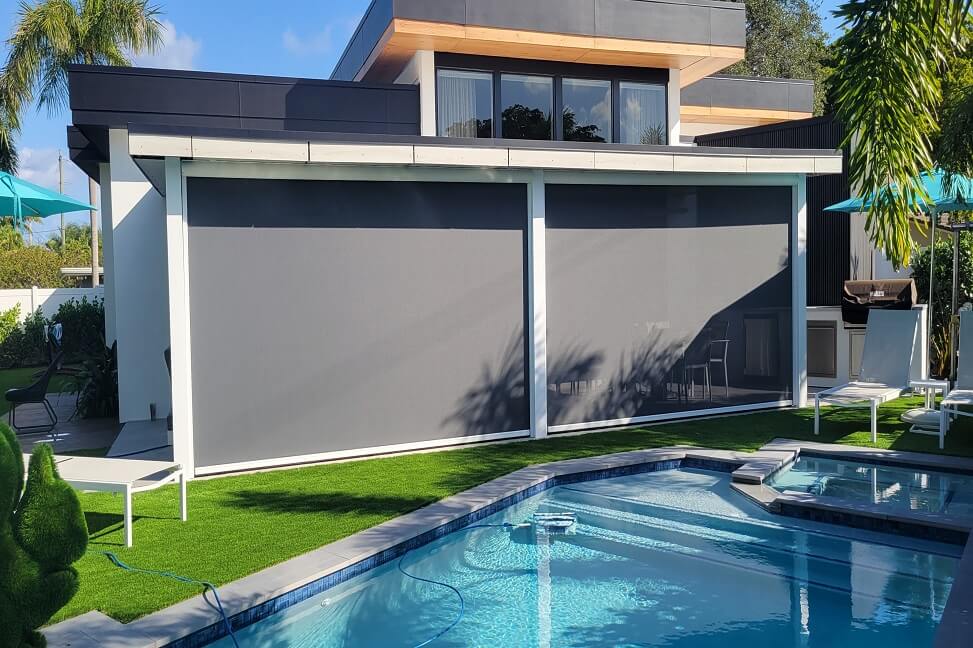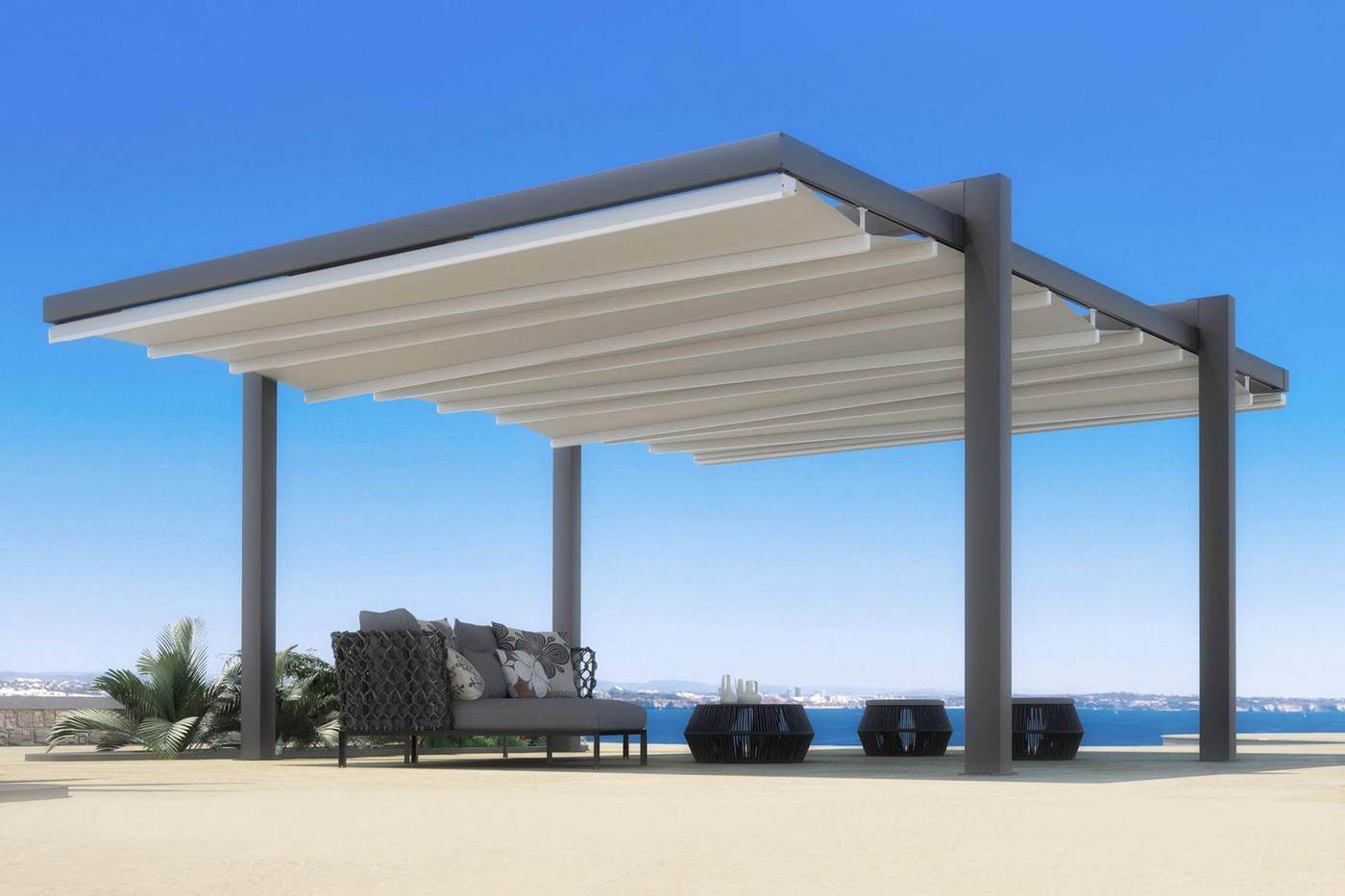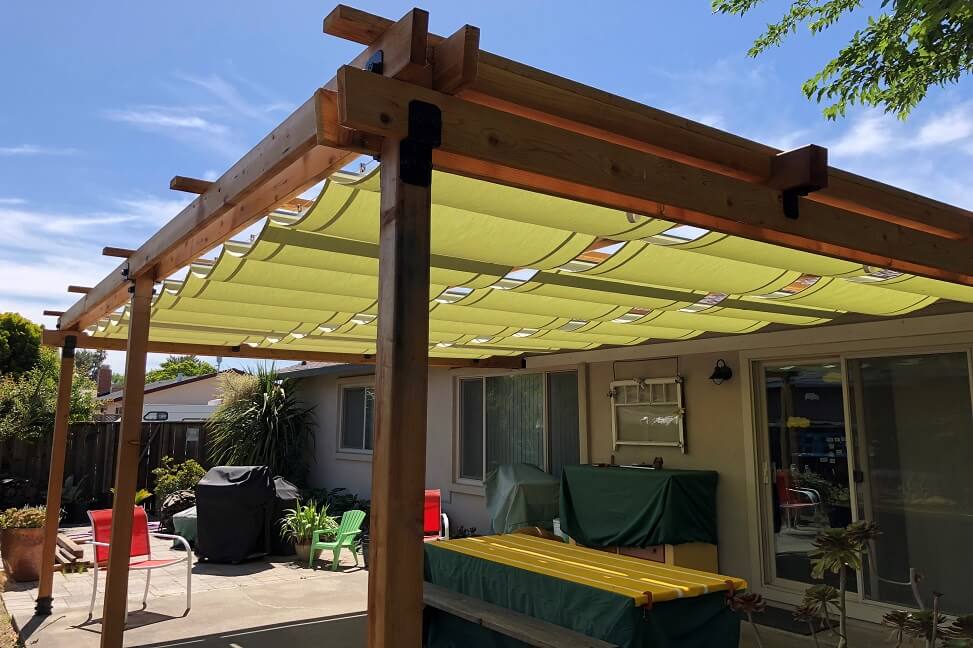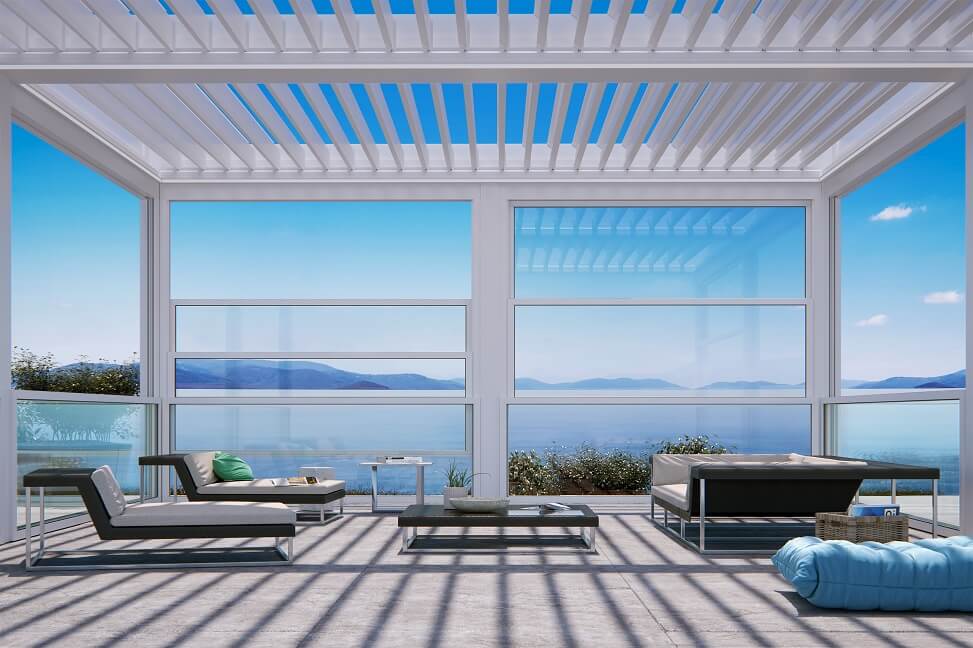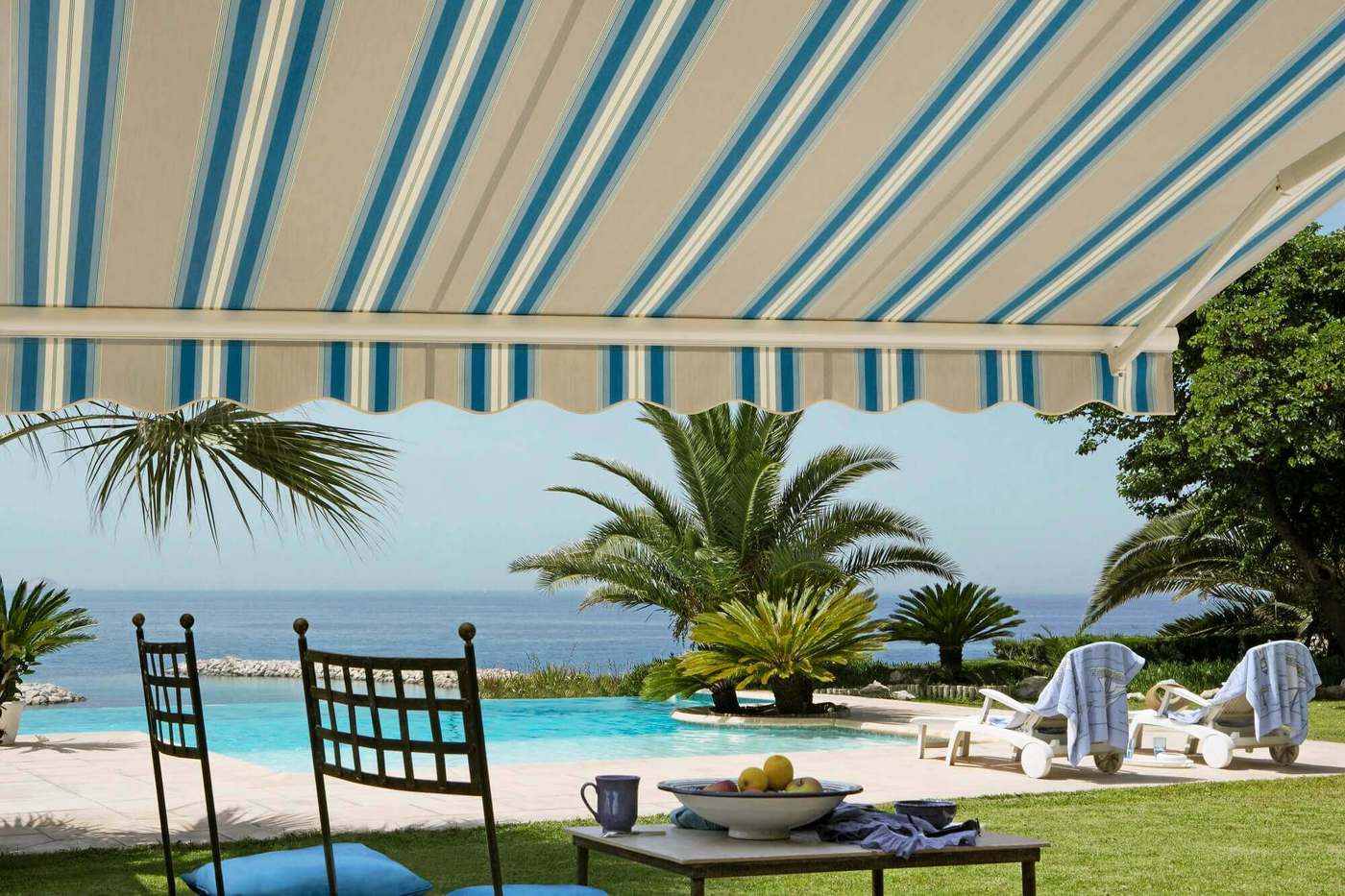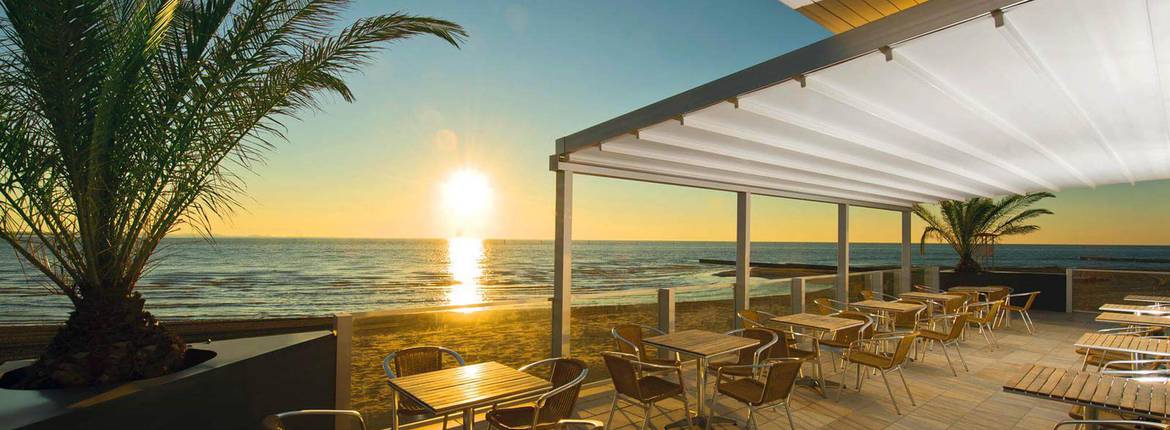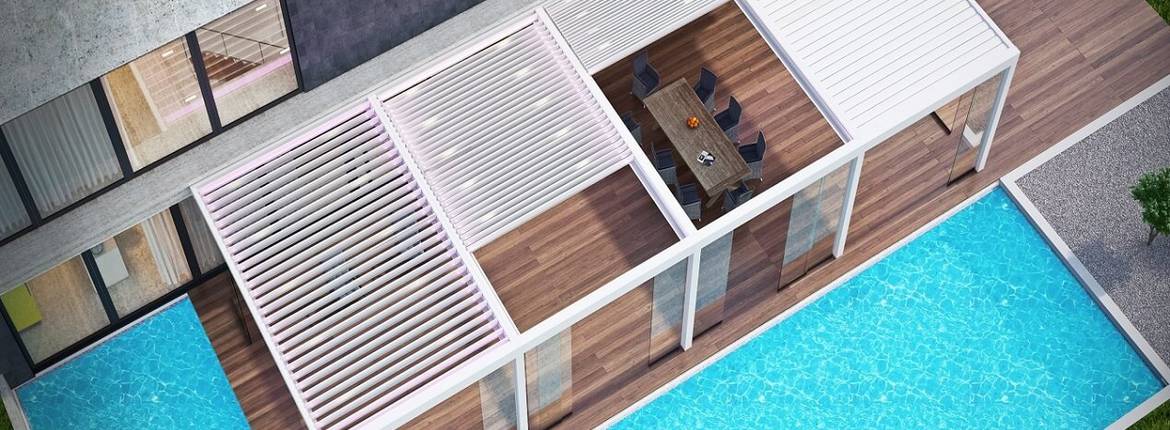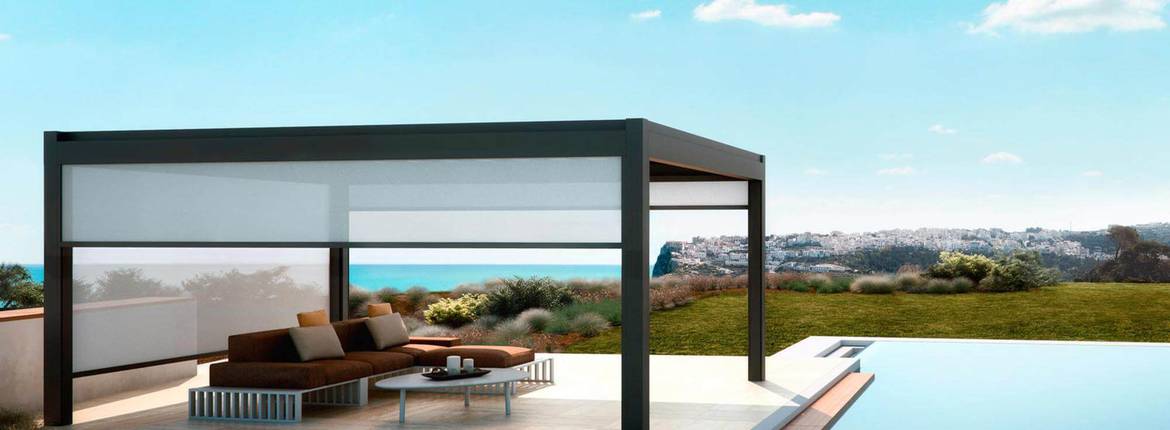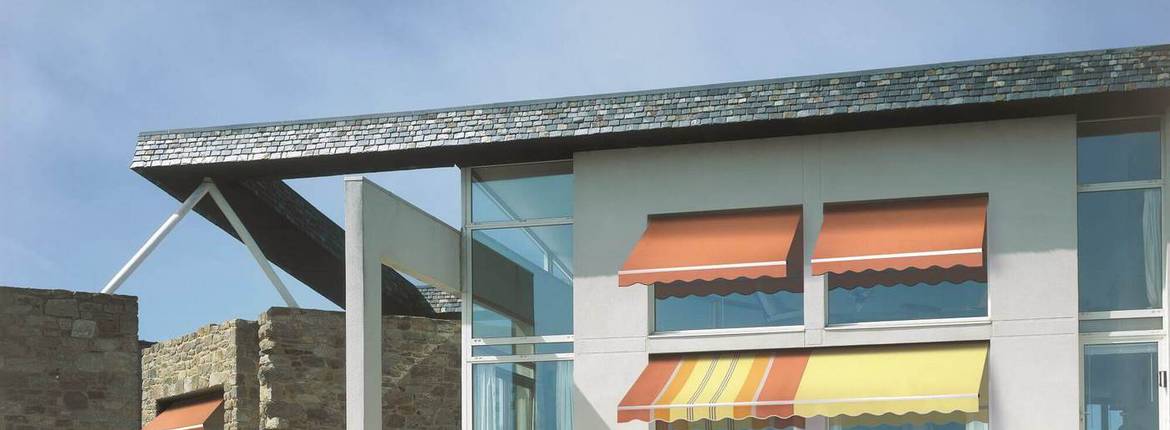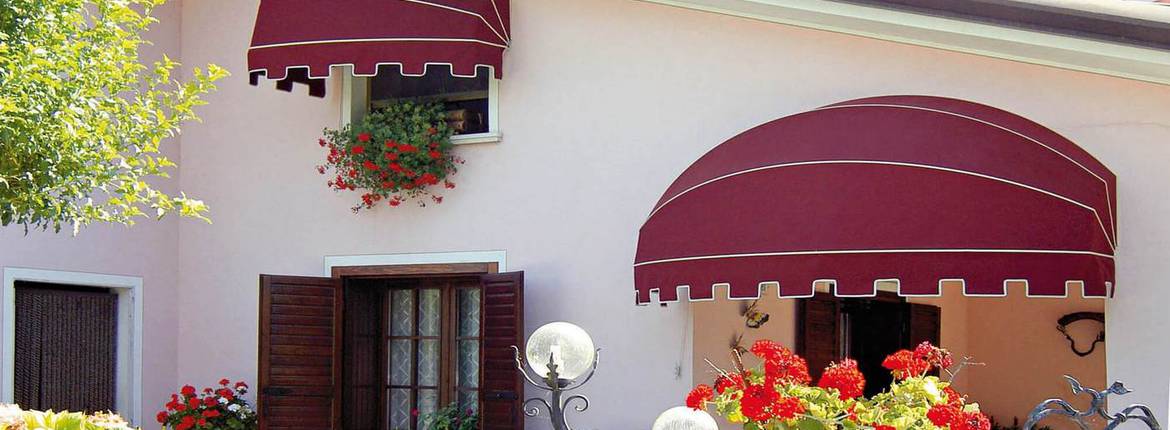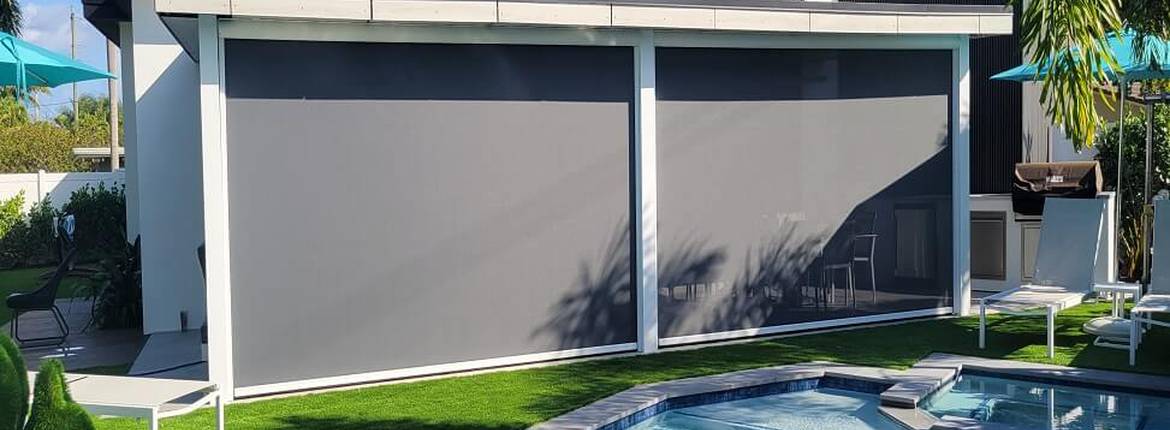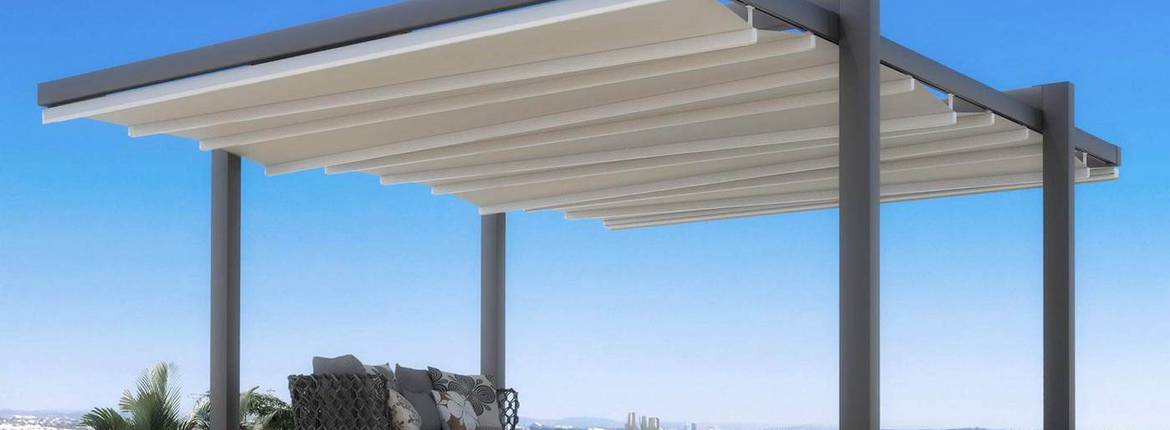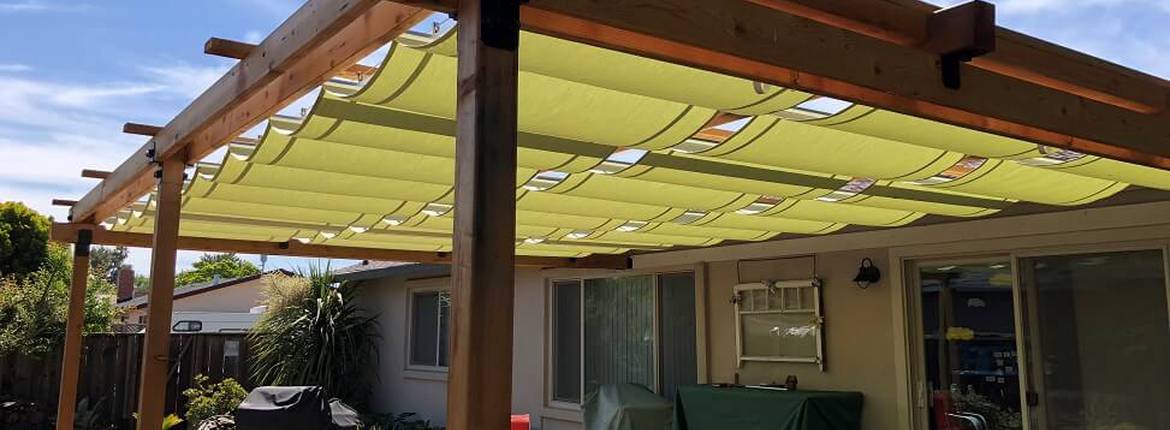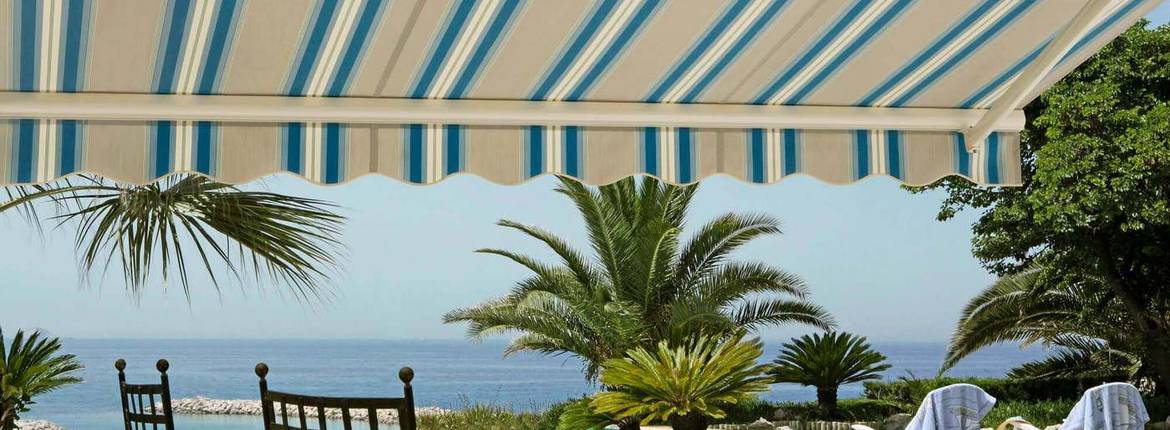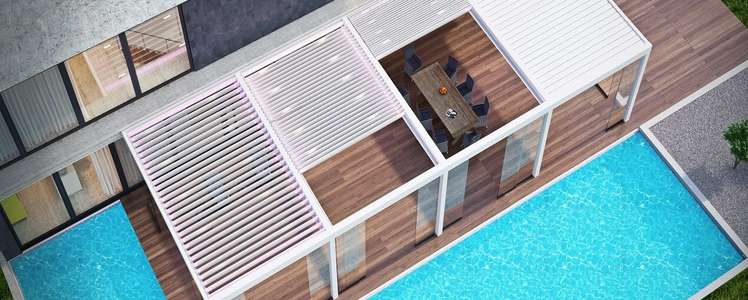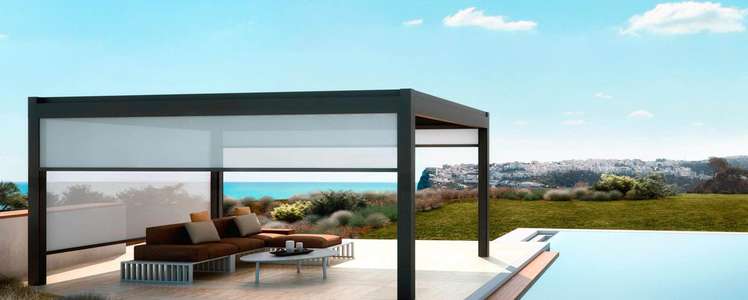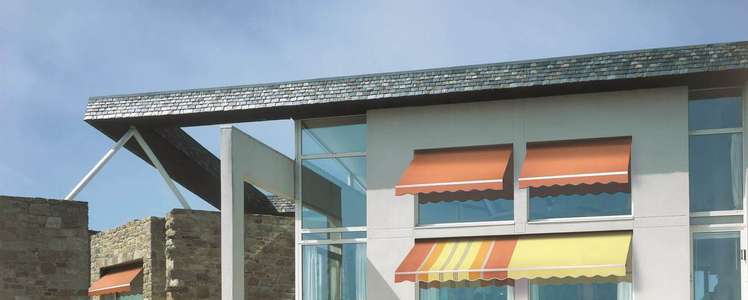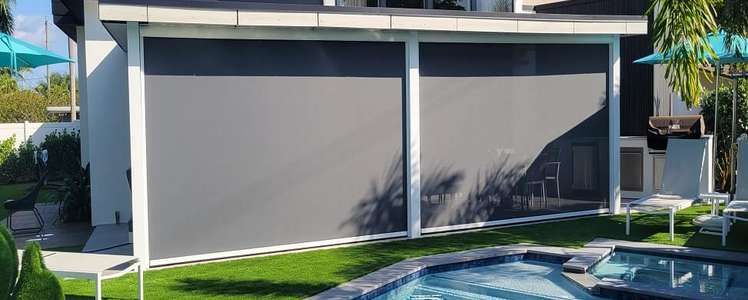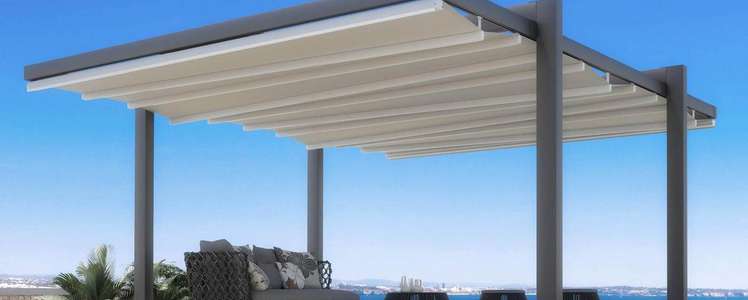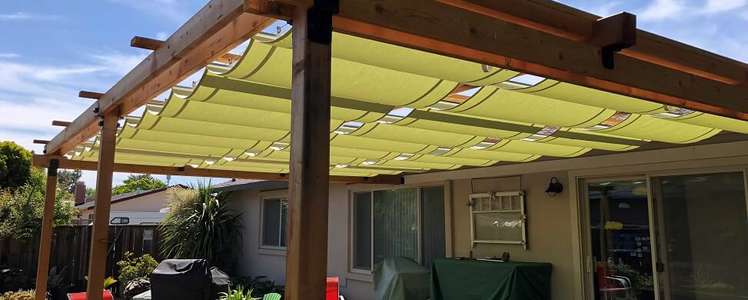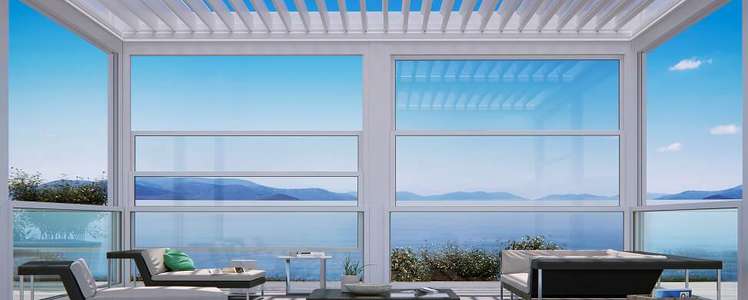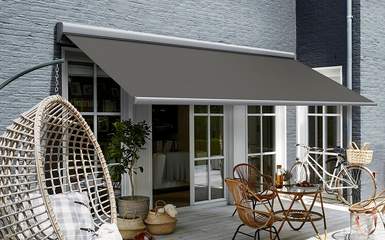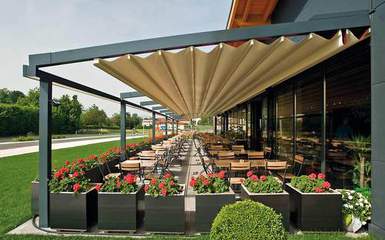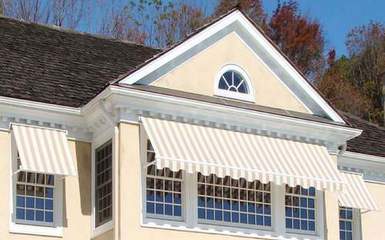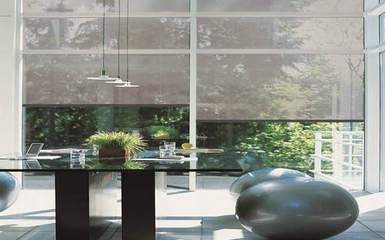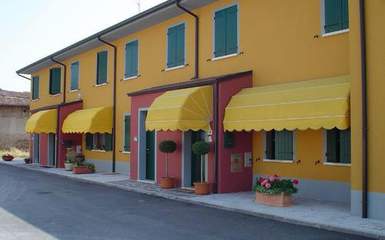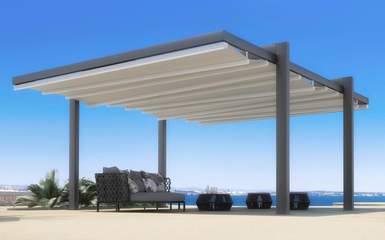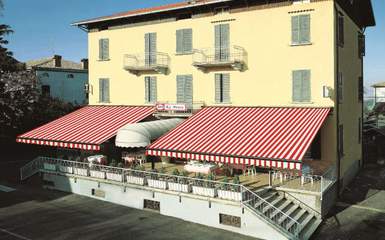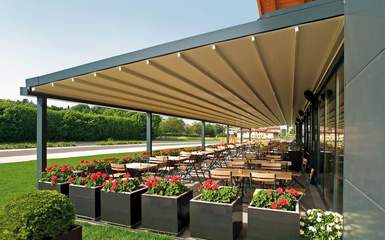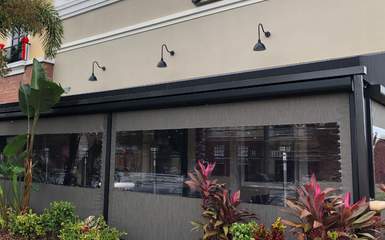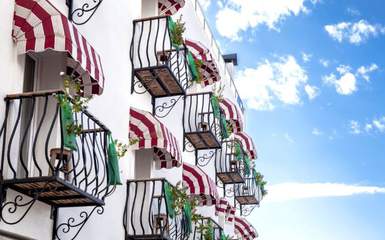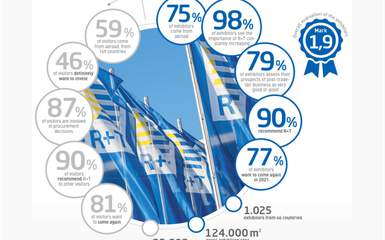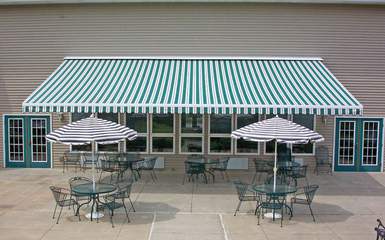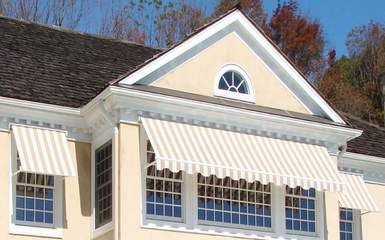Awning lighting is often an afterthought for property owners, but it can play a very important role in the overall aesthetics and function of your building or space.
When it comes to lighting your awning, there are many factors to consider. What is the purpose of the awning lights? What type of awning do you have? What style of lighting would be best for your property? In this guide, we will go over all the different options for outdoor awning lighting and help you choose the right setup for your business or home.
So whether you're looking to illuminate your patio during summer nights or want to add some extra brightness to your business facade, keep reading to learn more.
Awning Lighting Fixtures
As with any lighting project, before you start shopping for awning lights, it's very important to determine the purpose of your outdoor lighting. This will help you narrow down your options and choose the best fixtures and lamps for your needs.
For example, if you are looking for awning lights to brighten up your patio during summer evenings, getting fixtures with lights facing downwards makes more sense. This will create pools of light around the space, allowing people to see where they are walking and make it feel bright and inviting.
If you're looking to illuminate your storefront, awning lights with lamps facing downwards can be very effective as well if they are carefully aimed at the pavement or ground around the building. This type of lighting will help pedestrians notice your business from afar and prevent trips and falls because of poor lighting on sidewalks and walkways.
Another option is using awning lights to highlight features of your property such as architecture, landscape design, fountains, and statues. This type of accent lighting will create a special mood or atmosphere at night that your guests may appreciate during dinner appointments or wedding ceremonies. To make the most out of this effect, it's best to use fixtures that provide directional beams rather than diffused light, as it will enhance the features you are highlighting.
In addition to determining the purpose of your awning lights, there are other things you should consider so that you can choose fixtures and lamps with the right style and specifications. Some of these factors include:
- Style – How does your property or business look? What is its architectural style? Is it modern, classic, or romantic? Asking these questions will help you determine what type of awning lights would suit your space best.
- Color Temperature – If a building has a historic facade made from stone blocks or bricks, it's probably better to opt for lamps with yellow light as they will not cast bluish shadows on walls. If a building or landscape is very modern in design, you can opt to use lamps with white light for a brighter and more vibrant look at night.
- Compatibility – Before shopping for awning lights, it's essential to ensure that your existing electrical system is compatible with these lighting fixtures. If your main electrical panel does not have enough power to handle awning lights, you may want to upgrade this system before installing new lights.
- Light Source – In addition to color temperature, the source of light is also very important when it comes to outdoor lighting. There are three types of lamp sources for awning lights: halogen, fluorescent, and LED. Each one has its own advantages and disadvantages, so your choice will depend on what fits your purpose best.
Halogen lamps produce a warm lighting effect that many people prefer in their homes and businesses because they help create a softer atmosphere at night. But these lamps require more electricity than other light sources and often need higher wattage bulbs to produce the same brightness.
Fluorescent lamps work great for general lighting purposes, but they are not as bright as LED lamps or halogen lamps.
LED lamps are often preferred for their energy efficiency and long lifespan, making them an excellent choice for outdoor lighting of property because they prevent frequent lamp replacement. These lights also require less wattage than other light sources, making it possible to install more fixtures on one electrical system without having to upgrade.
Height and Width of Your Awning - The height and width of your awning will determine what size of lamp and fixture you can use. For example, you can use a larger fixture with longer lamp arms to light up your driveway if it's wider. If your awning is shorter or smaller in width, you will need to use shorter lamps and fixtures instead.
Durability – Outdoor lights are exposed to weather elements such as rain and direct sunlight that can lower their lifespan and affect how they work. If you know that your property will be exposed to harsh conditions all year round, it's wise to invest in fixtures with higher durability in order to prevent frequent replacements.
The Benefits of Awning Lighting
There are many benefits to adding awning lighting fixtures to your space. Once installed, they will help you out in a variety of ways:
- Security - Outdoor lighting helps deter criminals by making your building more visible to passersby. This is especially useful for businesses with large outdoor areas that may not get much foot traffic. However, it can also help any homeowner or business owner feel safe and secure at their property after dusk.
- Signage - Having proper signage is very important for both business owners and homeowners alike. At night, awning lights will make your business sign stand out. They also make great general-purpose lights if you own a shop or other commercial space.
- Aesthetics - Awning fixtures offer homeowners many different options for the style and design of their properties' exterior lighting systems. Whether you want traditional post lights, sleek wall mount fixtures, or stylish uplights, you will be able to find awning lights in any style and size.
- Easy to Install - Installing awning lights is very easy. They are attached to an existing structure and often require no extra wiring. This makes it a great DIY project for homeowners.
It's important to note that not all lamps work well with every type of fixture. To fully understand the differences between each option, keep reading about the different types of outdoor awning lights below.
Types of Outdoor Awning Lights
Now that you know what purpose you want your exterior lighting system to serve, it's time to choose your fixtures! However, before you start shopping around for outdoor awning lighting products, take some time to decide on the style and shape of your fixtures based on your particular needs.
Outdoor awning lights can be broadly categorized for decorative or functional use. However, there is often some crossover here with certain fixtures that can be used for both purposes.
Wall-Mounted
These lights are usually placed on the exterior wall of a building and point outwards towards the surrounding area. To enhance their beauty, they should only be used with uplighting that produces a soft and diffuse light or will shine downward onto walls and objects around them. This makes it ideal for adding accent lighting to your home's facade as it creates pools of illumination without illuminating anything below eye level.
Post and Lantern
Modern post lights can be mounted either to wooden posts or directly onto the side of your structure (for example, overhanging eaves). They create large circular pools of light by keeping hoods over bulbs pointing downwards toward pathways or street signs. Uplight models produce even more attractive effects as they illuminate every part of the awning at once.
As a bonus, many post lamps come with built-in motion sensors that can help you save energy by turning themselves off when they detect no motion nearby after 60 seconds. This feature makes outdoor awning lights particularly useful for security purposes as they will make your property more visible to passersby at night.
Pendant or Lantern
These fixtures are very versatile and provide different light-emitting surfaces depending on how you want to use them or what style you prefer. For example, lanterns have curved surfaces, while pendants usually have flat fronts with holes through them where light comes out from inside. These usually hang down from existing structures such as balconies or overhanging eaves.
Uplight
These lights are also suitable for security as they shine up into the sky, making your building more easily visible to passersby at night. This is especially true if you choose uplights that have flashing or revolving LEDs, although these types of fixtures should not be used too close together as their patterns may clash. Uplights are also very popular because they come in many different styles and colors, which means you will always find one that fits with your home or business's design aesthetic.
String lights
Outdoor string lights are very popular because they come in a wide range of designs, and they can be used to add mood lighting or enhance your home's or business' exterior design. You can hang them from eaves, overhanging roofs, or even trees and gardens to create a unique atmosphere.
LED Tape Strips
It's also possible to use LED tape (similar to that used in under-cabinet and cove lighting) and other narrow profiles for outdoor awning lighting purposes. Many of these come with their own mounting brackets, connectors, and adhesive backing, making them easy to install without any help from an electrician.
Other Lighting Options
Outdoor awning lights aren't the only option when it comes to adding an exterior lighting system to your business or home. You can also choose from other alternatives such as solar-powered decorative garden lamps as well as low voltage models designed for use on decks. However, these tend not to be permanent fixtures, so they don't provide as much security as those that attach directly to your building.
Final Tips When Installing Awning Lighting Systems
Never Forget Safety
Keep in mind the risk of electrical fires when using certain types of lighting systems, especially around flammable objects such as wooden decks and garden beds. To reduce your chances of fire hazards, always make sure to follow the manufacturer's instructions carefully during installation and periodically check all wiring for signs of wear or damage.
If you discover any problems with the installation process (e.g., bulbs keep burning out), then make sure to contact a reputable lighting company in your area to find out if there is anything they can do to help you solve these issues.
Maintaining Your Outdoors Lighting System
Keeping an outdoor lighting system functional is much easier than you might imagine as long as you place your fixtures in suitable locations and choose the right ones for their purpose. Also, keep them away from trees or other objects that may block their beams of light.
When selecting outdoor awning lights for your business or home, you should keep in mind the different lighting styles available to suit your preferences and budget. Whether it's uplights, downlights, string lights, or some other type of exterior illumination that will best suit your needs, you can be sure there is an option available for almost any application. Also, don't forget to consider safety issues when installing these fixtures around your property so you can get the most out of them without worrying about fire hazards.
Outdoor Awning Lights FAQs
What lights work best for an outdoor awning?
Lighting style and fixture placement depend on the owner's preference. A lighting professional can help determine what works best depending on the owner's needs.
Why do I need lights on my awning?
Exterior lighting is necessary for businesses as it offers protection from thieves and other criminals, serving as a deterrent against crime. Decorative lighting offers a home or business owner the opportunity to enhance your property design. Finally, awnings lights offer safety benefits by helping people see your business or home more clearly in dark conditions.
How much electricity should pendant lights use?
It depends on the wattage used and the type of bulb. You can save on power usage with energy-efficient bulbs such as LED lights.
How do I know if my LED lights need to be replaced?
Newer LED lights have a longer lifespan. You'll have to replace them every two years or so, depending on how often they're being used and their quality. Check your manual for more information about replacement criteria as it varies from one type of bulb to another.
Contact our European factory trained, experienced retractable residential and commercial awning, pergola, screen and canopy experts using our contact form, our live help chat or call us in the USA or Canada toll-free at (866) 438-2964 or outside the USA or Canada at (305) 628-2424.
![Folding Arm Awnings Folding Canopies]()
![Retractable Pergola Covers Awnings]()
![Retractable Drop Arm Awnings]()
![Retractable Patio Screens and Vertical Drop Awnings]()
![Retractable Window Awnings]()
![Retractable Free Standing Awnings and Canopies]()
![Retractable Lateral Arm Awnings]()
![Retractable Pergola Roof Covers]()
![Retractable Side Arm | Drop Arm Awnings]()
![Power Retractable Screens]()
![Retractable Canopies for Commercial Buildings]()
